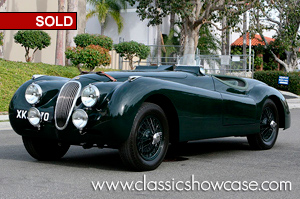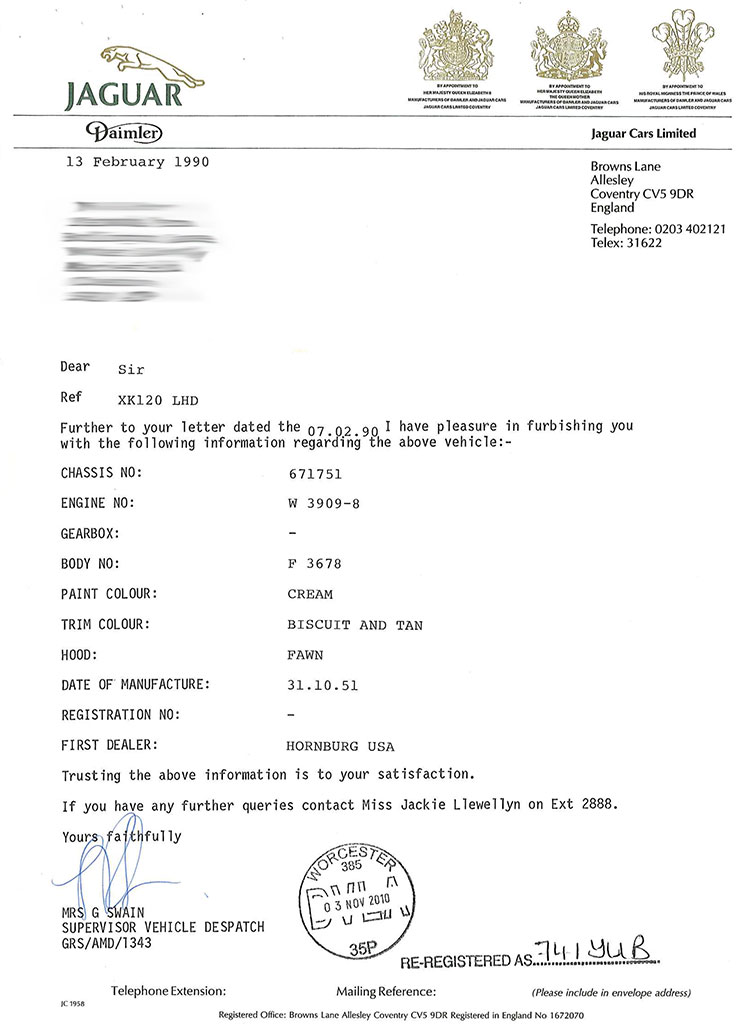1951 Jaguar XK-120 'LT1' 3.4 OTS
Specifications |
|
| Stock: | J51-751 |
| Current condition: | SHOW-DRIVER |
| Performance: | 210 bhp, 3,442 cc DOHC inline 6 cyl., sand-cast twin SU carburetors |
| Performance options: | C-Type-specification Head |
| Transmission: | Four-speed manual transmission |
| Suspension: | Independent front suspension with upper and lower wishbones |
| Color exterior: | British Racing Green |
| Color interior: | Suede Green |
| Features: | Torsion bars, Hydraulic dampers, Live rear axle with trailing arms, Double-action torsion bar, Torque reaction member, Hydraulic dampers |
| Mileage: | 284 miles driven since restoration |
| Tires: | Avon Turbo Steel 185/15 |
| Brakes: | 4 wheel Lockheed hydraulic drum brakes |
| Vin #: | 671751 |
| Engine #: | G5393-8 |
| Gearbox #: | JL20181 |
| Other 1: | Body Number: I3678 |

Description
(SOLD)
History
In 1951, William Lyons was preparing Jaguar’s new C-Type for entry at Le Mans. Doubtful that the completely new automobile would be ready in time for the race, Lyons ordered up three special Works-built XK120s as an insurance policy. These cars were the first XK120s since the initial run of 210 cars in 1949 and 1950 to have lightweight aluminium coachwork. They boasted tweaked lines with cut-down doors, rear sheet metal produced in a single piece, and Brooklands-type aerodynamic windscreens. Known as LT1, LT2, and LT3, the cars wound up not racing at Le Mans, as the C-Types were completed in time. They sat around Browns Lane until Charles Hornburg, the famous US West Coast Jaguar importer, spotted them during a visit. He promptly purchased the cars and exported them stateside, where Phil Hill masterfully drove one to 3rd overall and a class win in its very first race in August 1951. LT1 remained in England and went to Jaguar employee Bob Berry, who mounted its coachwork to an XK120 chassis that he already owned and installed a D-Type engine and four-wheel disc brakes. The car was eventually brought to North America and was exhaustively raced by the late Peter Price at various West Coast circuits. Today, LT1, restored to its original appearance, resides in a private collection.
Authenticity

